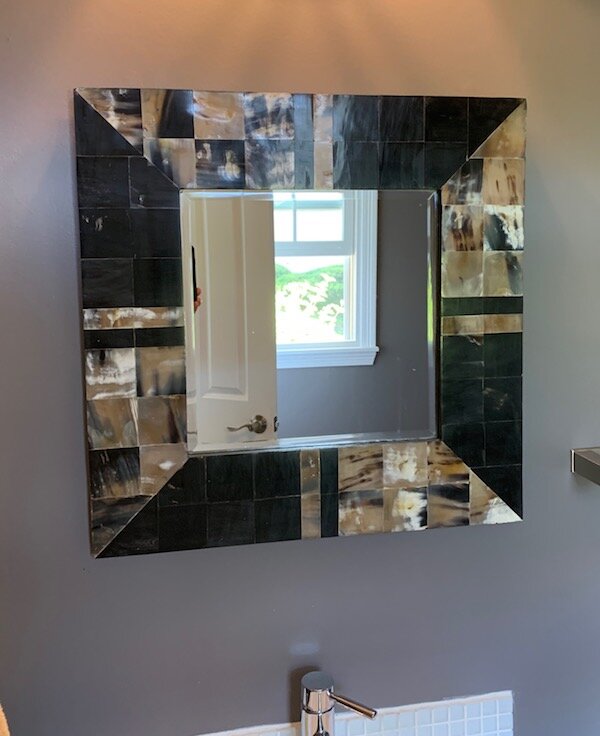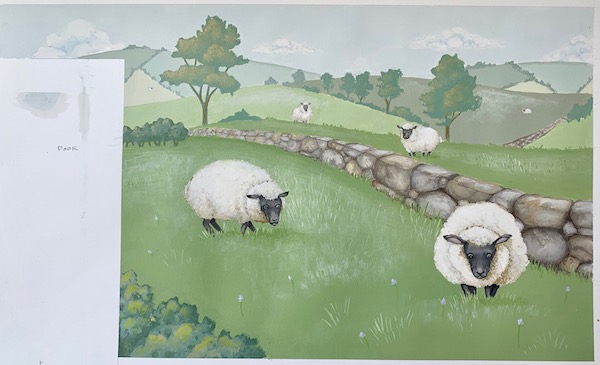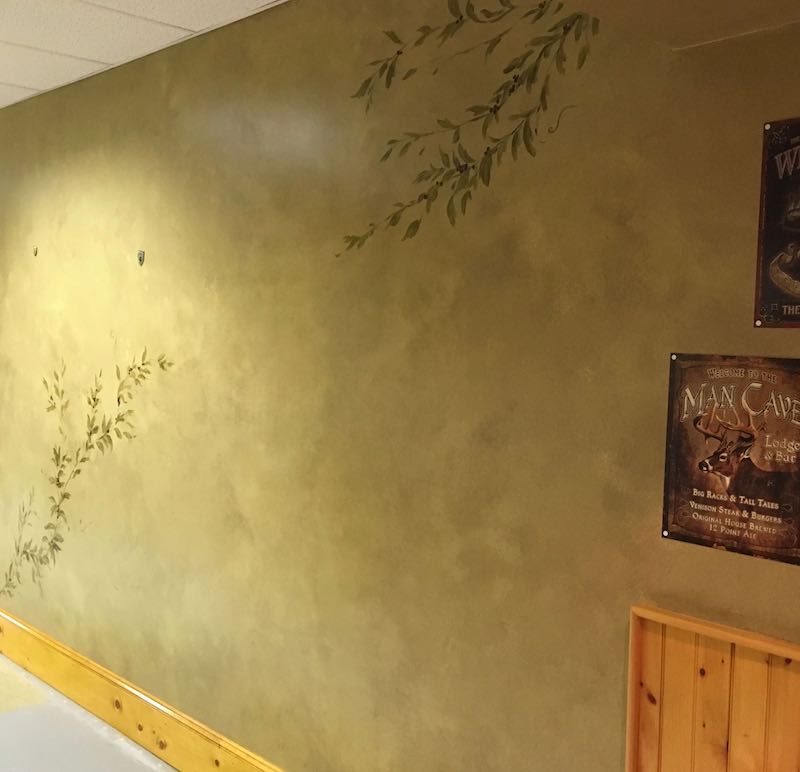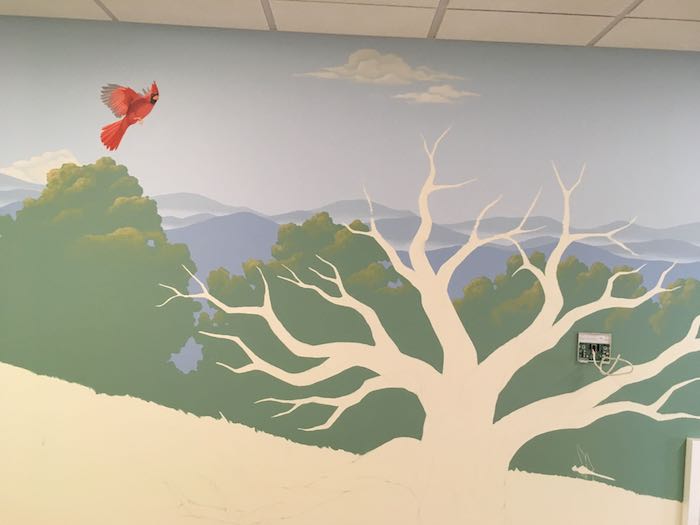I love the challenge of bending my style to create murals for all kinds of spaces – which was definitely the case with this dining room mural in Newton!
My client Cathie was re-doing her dining room and wanted to do something different and dynamic with the wall treatments. Collaborating with Cathie and her interior designers at Briar Design, we settled on letting the art nouveau details of the house (which was built around time art nouveau was flourishing) influence the design. Cathie also likes chinoiserie designs, so that also played a role in our choices.
Below are some shots of the room before we started (note the elaborate iron gate!)
We started by thinking about colors, and to keep with our theme and Cathie’s preferences, we landed on teals and blues. Cathie also asked to incorporate gold (which was a perfect addition!). For the subject matter, we decided to incorporate water birds as a nod to chinoiserie.
With this direction in hand, I started to sketch out ideas and bounce them off of Anne and Jessica at Briar Design. After some collaboration, we landed on using egrets, lily pads and lotus flowers. I started my design concept with the organic, curling shapes in the iron gate and built off that. Here is my first concept drawing that we presented to Cathie:
Cathie loved the idea (!), so my next step was to take a section of this sketch and show Cathie what our final color selections would look like:
Cathie was happy with the final concept – so I was ALMOST on to the final mural. Before I could do that, I had to design the other walls in the room. Using measurements I took of the space, I did scale renditions for all of the walls:
With this step done, NOW I was on to the final mural! It was a blast to watch this mural unfold, and truly a pleasure to work with Cathie and her husband. Anne and her team are still working on next steps for the rest of the design (including sconces in the holes on one of the walls, new chandelier, etc) – but here are final pictures of the art nouveau walls!
Wall 1
Walls 1 and 2
Wall 2
Walls 2 and 3
Wall 3
Wall 4
And back around to the first wall with the corner of wall 4
Enjoy!
Jason



























































































































